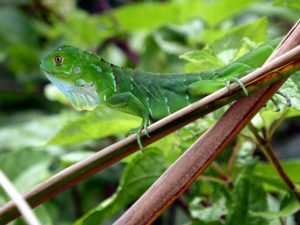
In the mid-1980s, Costa Rica was a country almost devastated by deforestation. In 1960 the deforested territory was 36%, and by the year 2000 deforestation had increased to 89%. Its rates of logging and clearing for agriculture and livestock and the weak and weak forestry legislation led Costa Rica to an arid abyss.
However, the Tico chip changed. And it changed to make this Central American nation a place where, despite the problems that still exist, nature is valued as a treasure that is also one of its main sources of income. Environmental laws are enforced regardless of who is in government. With the care of the environment is not done politics.
A few weeks ago I was invited to participate in the journalism workshop on climate change,
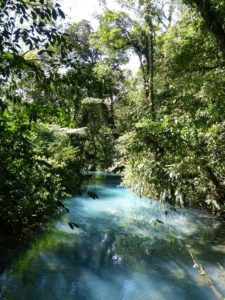
“The transition from Costa Rica to a low carbon economy”. The objective was to show a group of journalists experienced in the topic how Costa Rica is consolidating its role as a pioneer in implementing renewable energies, the success of its low carbon projects, and how this country has made eco-tourism its second most economic activity important after the manufacturer. The country also has a high production of pineapple, coffee, and livestock.
With what was beginning to happen in the Isiboro Securé Indigenous Territory (TIPNIS) in mind, comparisons were almost obligatory. How true was all this green idyll? Can you really live in harmony with Mother Earth?
TO THE BAD STEP …
First, it must be clarified that not everything is joy in paradise. Costa Rica has serious problems with its fleet. And with the management of its wastewater. Sound familiar?
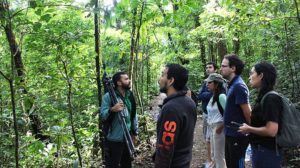
Transportation is responsible for 40% of the country’s emissions of pollutants. As a public transportation system, Costa Rica has a metropolitan train and old collective diesel. It is one of the countries in which the per capita car rate is higher: For every 100,000 inhabitants, there are 188 vehicles compared to 67 in Peru, for example. This accounts for the fearsome “dams” (vehicular congestions) that hit the streets of San José during peak hours. “It is a shame that we have lagged on this issue, we do not regulate the fleet and now we are full of old cars”, acknowledges Irene Cañas, Deputy Minister of Energy, although as a palliative Costa Rica has been the first country in the region to apply a tax of 3.5% on fossil fuels, resources that are then used in environmental programs.
Today there is a pilot program to test the use of electric vehicles in public transport and is encouraging the change from gasoline to natural gas, as well as offering advantageous credits for those who switch from their old vehicle to a new one. The remains of old cars will be used to make gabions that stabilize slopes and avoid slopes.
“We have to take advantage of everything,” says Edgar Gutierrez, Costa Rica’s Minister of
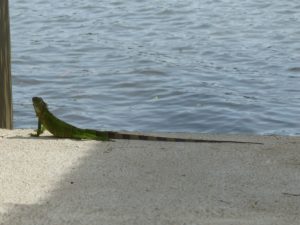
the Environment and Energy, who accepts that the other key issue in Costa Rica is wastewater management and the need for sanitation works. “But it is clear that we have made great strides in our commitment to sustainable human development. We have stopped deforestation, we generate clean energy, hunting is forbidden, and now we are heading to be a nation free of the use of plastics. Costa Rica’s challenge of making the environment a sustainable business is already underway and can not go back to it. All political parties are aware of this, “explains Gutiérrez emphatically.
PAY FOR THE GREEN
Costa Rica, based on normative tools, in solidarity with the environment and the creation of the Program for Payment for Environmental Services (PSA) currently has 52.4% of its area with forest cover. Recall that by 2000, deforestation had risen to 89%. The PSA helped a lot to change the landscape. What is it?
The Program for Payment for Environmental Services, an initiative that has also been developed by other countries in the region, such as the Socio Forest Program of Ecuador and the forest promotion policies of Guatemala, is a financial recognition granted by the State, through the Fund National Forest Financing Fund (FONAFIFO), for the environmental services generated by the activities of conservation and management of forest, reforestation, natural regeneration and agroforestry systems. This program has been used to strengthen the system of protected areas and create biological corridors covering 437 thousand hectares. The program (PSA) provided incentives to farmers to plant 5.4 million trees, in addition to supporting the conservation of forests in indigenous territories. In total, between 1996 and 2015, investments in forest-related PSA projects in Costa Rica reached the US $ 318 million; 64% of these funds came from fossil fuel taxes and 22% from World Bank credits. “We thought that deforestation rates would leave us without forests by the year 2000. Today we have more forest than ever and the state pays for the environmental services that society enjoys,” explains Jorge Mario Rodríguez, director of FONAFIFO.
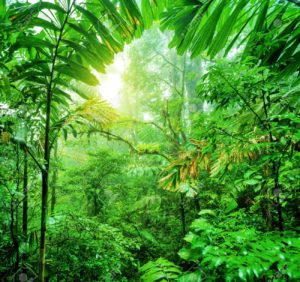
Currently, about 50% of the country’s forest area is in protected areas where the Forestry Law prohibits land use change. The Forest Law of Costa Rica recognizes four environmental services that provide forest and forest plantations: mitigation of greenhouse gases (fixing, reduction, and storage of CO2), protection of water resources, protection of biodiversity and protection of scenic beauty. Yes, the state also pays to those who preserve the beauty of nature.
And although it sounds quite novels the answer, the truth is that one of the most important capitals of Costa Rica is the love that people have to their land. The tico has created the motto, Pura Vida. And not just for and with tourists. it’s a lifestyle.
“WELCOME TO COSTA RICA”

Costa Rica, under José Figueres Ferrer, decided to abolish the army in 1948 after a bloody civil conflict that cost the lives of 2,000 people and to allocate that budget to education, research, health, and culture. The best of Costa Rica is high. Public schools must give two meals free of charge to students who are in poverty, which implies a higher schooling, and English as a second language reaches 90% of schoolchildren, according to the State of the Nation Program. Therefore it is not surprising the level in the language that has those who dedicate themselves to tourism, especially the younger ones. “Not an option is an obligation, not speaking English with a number of tourists arriving in Costa Rica is impossible. If I do not speak well, there are ten behind me who do. And I’m out of work, “says Carolina Correa, who works in the tourist office in the town of La Fortuna, at the foot of the Arenal volcano, a natural paradise that is difficult to describe in words.

Although in the different zones of Costa Rica you can find the most exclusive hotel chains, a good part of the hotel offer of the country is based on family developments focused on sustainable tourism. The figures of the ecological tourism that Costa Rica offers are extraordinary. Last year the country tripled the number of visitors with 2.9 million tourists, the majority coming from the United States. According to the newspaper La Nación, in a decade there could be more visitors per year than inhabitants. The Central American Population Center estimates that by 2027, the population will be 5.4 million compared to 5.53 million foreigners if this pace of growth continues.
It is precisely at this height that the environmental regulations, the Wildlife Conservation Law
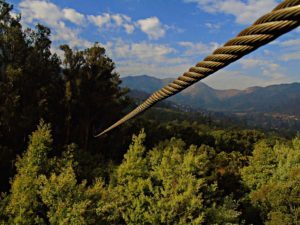
and the Biodiversity Law, among others, are more vigorous and strict. This year has approved the regulation of the Wildlife Conservation Act that guarantees the protection and proper management of wild plants and animals and considers wildlife as a public domain property, “because of which all Costa Ricans have the duty to protect and manage it properly, ensuring enjoyment for present and future generations. “
“Costa Rica, by betting on a system of national parks and forest cover that covers more than half of its territory, incorporated the environment into its development agenda. After the technological manufacture, tourism is the second source of income and this activity is based precisely on nature. In this sense, environmental journalism is a fundamental piece in the control of policies and actions of both the government and the private sector and civil society organizations. “
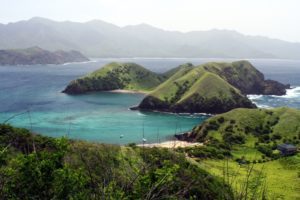
99% of energy in Costa Rica comes from renewable energies. We were able to see the imposing Tejona wind farm, which is owned by the Costa Rican Electricity Institute (ICE) created in 1949. ICE has an obligation to provide electricity to the entire nation, of which 99.6% is electrified. It works through non-profit cooperatives. According to what explains Elbert Durán, in charge of ICE communication, environmental sustainability is a concept that was already managed in Costa Rica since the early twentieth century and has materialized through education for the population. Wind power in Costa Rica was implemented in 1994, and although its percentage is still lower in relation to others (10%), its growth is a challenge not to rely on dams because the flow can be altered by the intensity of rainfall due to climate change. The electric tariff of Costa Rica is one of the cheapest in Central America, which is not a minor detail.
Costa Rica is the show that you can live and progress in harmony with Mother Earth, and although much remains to be done, the road has already begun. Pure Life.
